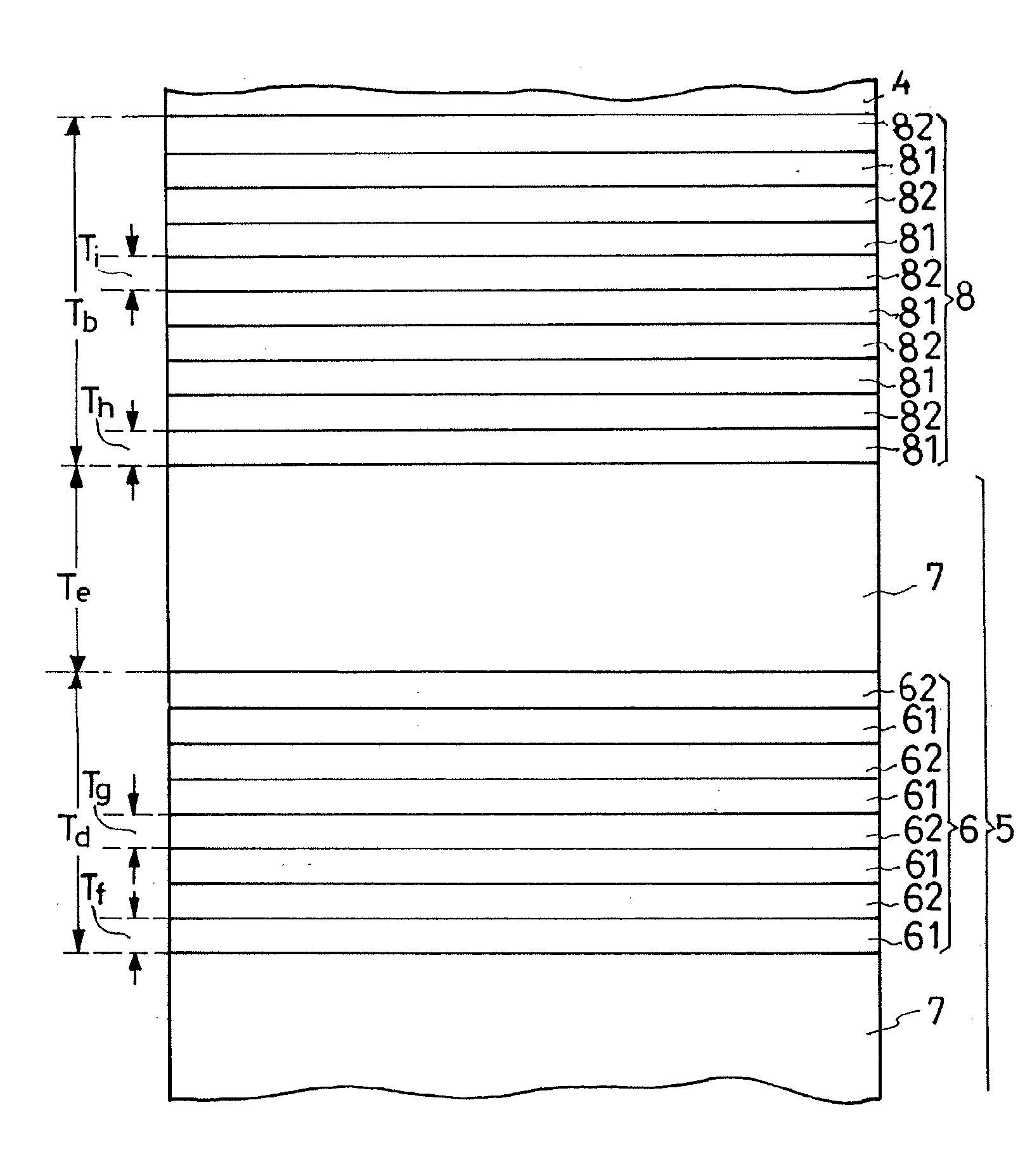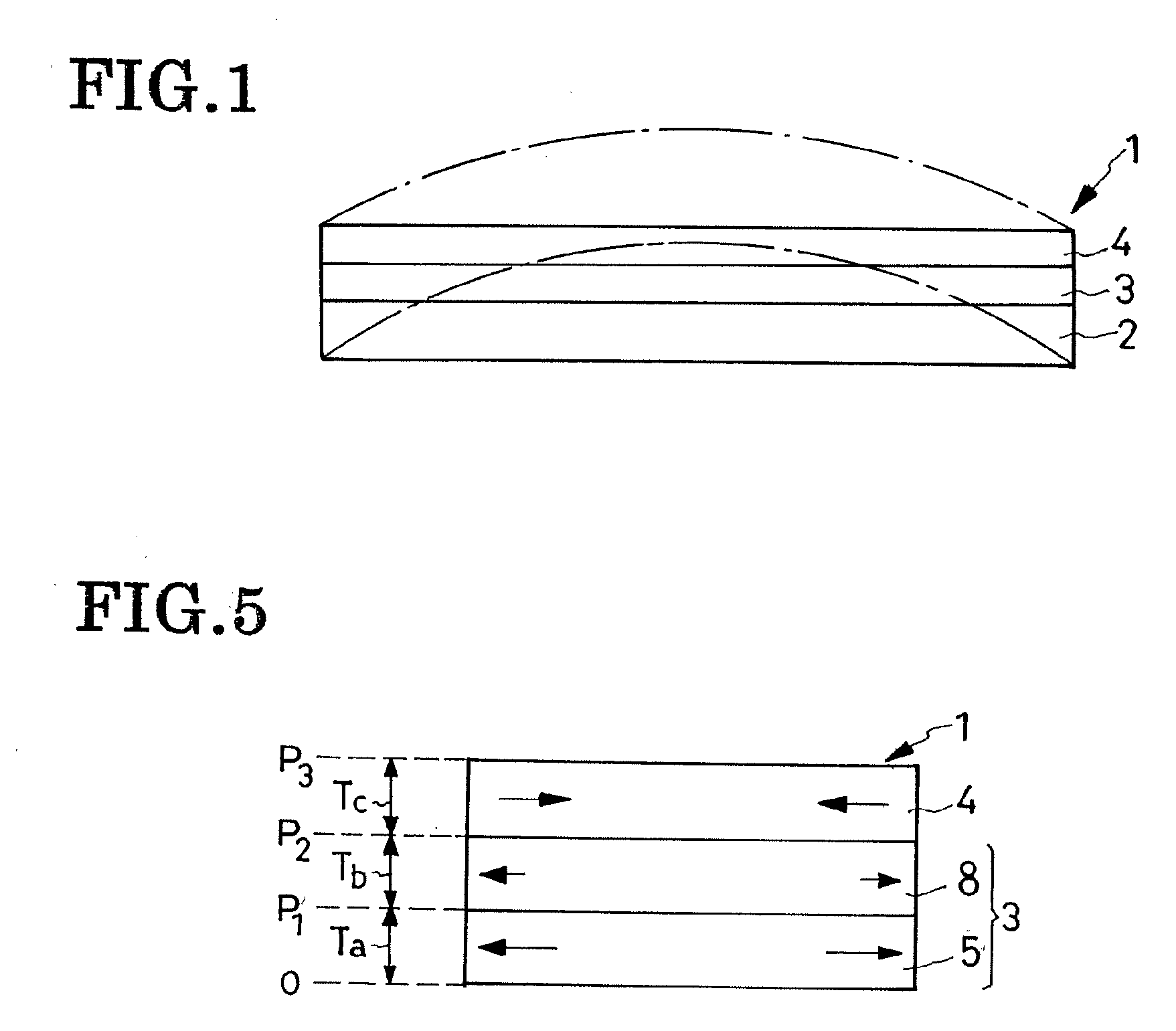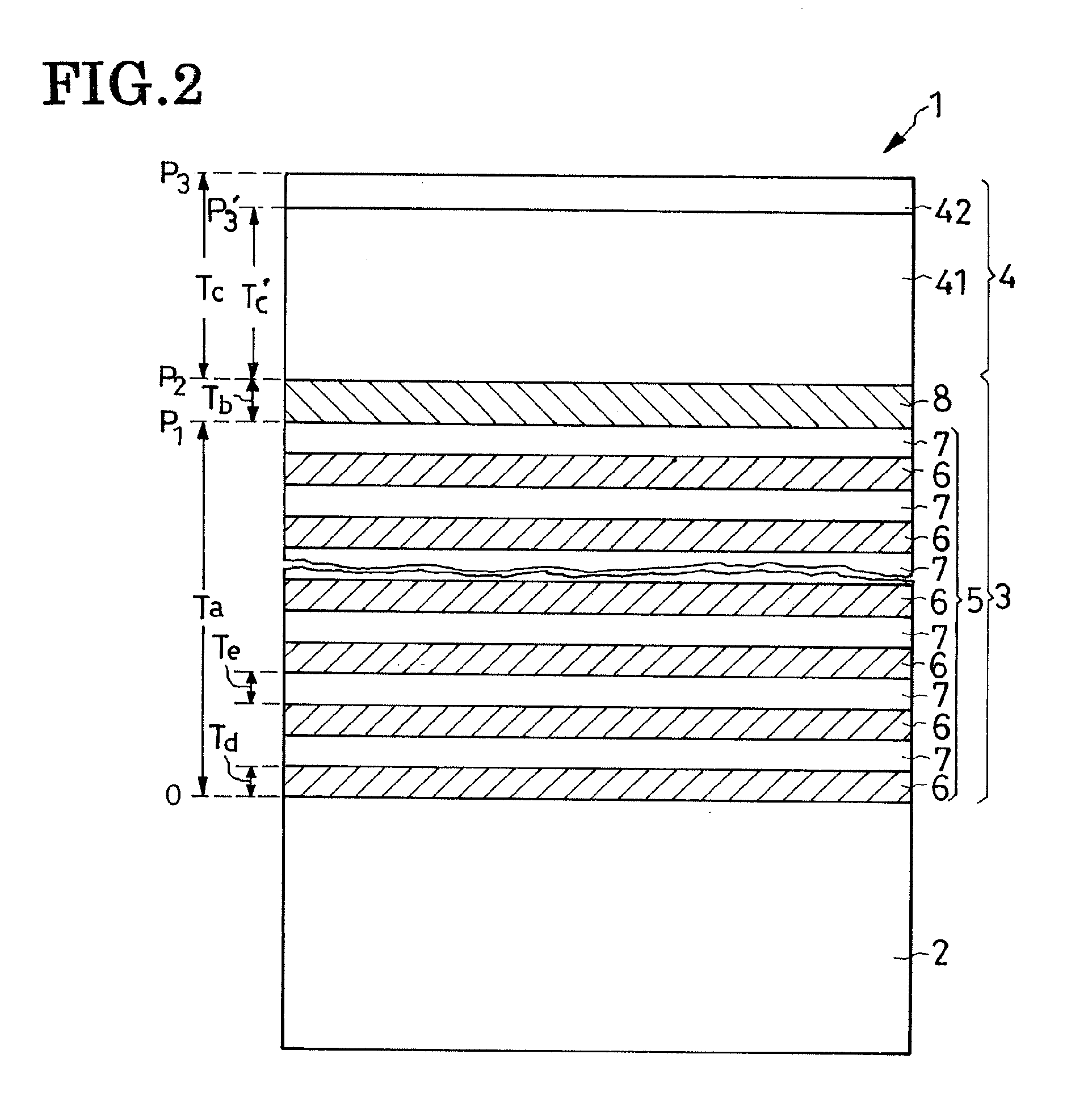Semiconductor wafer, devices made therefrom, and method of fabrication
a technology of semiconductor wafers and semiconductor layers, applied in the direction of semiconductor devices, basic electric elements, electrical equipment, etc., can solve the problems of inconvenient use of silicon substrates, and inability to manufacture, so as to reduce the warpage of semiconductor wafers
- Summary
- Abstract
- Description
- Claims
- Application Information
AI Technical Summary
Benefits of technology
Problems solved by technology
Method used
Image
Examples
embodiment
of FIG. 7
[0123]This modified semiconductor wafer 1a is similar in construction to its FIG. 2 counterpart 1 except for a first multilayered buffer subregion 5a of a buffer region 3a. The first buffer subregion 5a of the wafer 1a differs then from the first buffer subregion 5 of the buffer region 3 of the wafer 1 in the absence of that one of the non-sublayered second buffer layers 7 of the first buffer subregion 5 which forms the topmost layer of the first buffer subregion 5 in the wafer 1. Consequently, in this modified wafer 1a, the second buffer layers 7 of the first buffer subregion 5a are one less in number than those of the first buffer subregion 5 of the wafer 1. The topmost one of the multi-sublayered first buffer layers 6 of the first buffer subregion 5a forms the topmost layer of that entire subregion 5a and is joined directly to the overlying second multilayered subregion 8 of the buffer region 3a.
[0124]In this wafer 1a, too, the second multilayered buffer subregion 8 is l...
PUM
 Login to View More
Login to View More Abstract
Description
Claims
Application Information
 Login to View More
Login to View More - R&D
- Intellectual Property
- Life Sciences
- Materials
- Tech Scout
- Unparalleled Data Quality
- Higher Quality Content
- 60% Fewer Hallucinations
Browse by: Latest US Patents, China's latest patents, Technical Efficacy Thesaurus, Application Domain, Technology Topic, Popular Technical Reports.
© 2025 PatSnap. All rights reserved.Legal|Privacy policy|Modern Slavery Act Transparency Statement|Sitemap|About US| Contact US: help@patsnap.com



